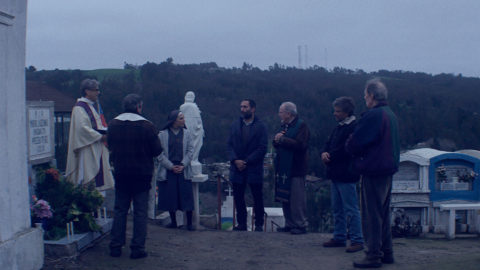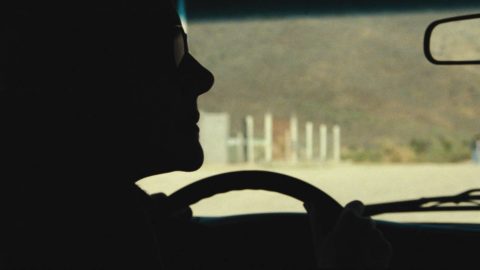Interview: Jayro Bustamante
Guatemalan director Jayro Bustamante’s first feature begins and ends with a close-up of María, the daughter of a low-level coffee plantation manager, Manuel, and the strong-willed, practical Juana. These close-ups stay on the 17-year-old María (María Mercedes Coroy) as she carries out daily routines, rarely altering her expression even as her restraint unravels, and she begins to play out her desires and arrange for her own future. Each breathtaking shot of the Guatemalan Highlands must compete with this face and this body, home to a resilient will which a mountain of forces threaten to destroy. María is set up to marry plantation boss Ignacio, but in a bid to leave Guatemala for America, she sleeps with the ambitious but reckless laborer Pepe, who ends up leaving without her. Eventually, she gets pregnant and must contend with both the pull of tradition at home and the push of anti-Mayan discrimination in the city.
Some of that setup may feel familiar, but Bustamante’s formal choices in Ixcanul—especially in pacing, with a rhythm that builds from take to take—allows for the story to play out to its most affecting measure. From beginning to end, both María’s presence and distance is felt, as she struggles to assert herself and express her inner life. FILM COMMENT spoke with Bustamante by phone from Guatemala, the day of Ixcanul’s screening in Neighboring Scenes at the Film Society of the Lincoln Center. Later this year Kino Lorber will release the film, which has been submitted as Guatemala’s candidate for the Academy Award for Best Foreign Language Film.
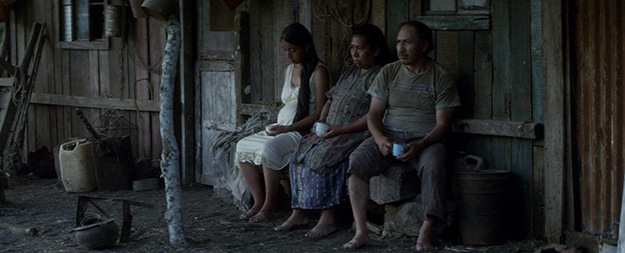
The film has these incredibly expansive, beautifully lit shots, but also these tight close-ups of bodies—especially María’s body, and her face—and it’s these close-ups that really stand out in the film. Were you and cinematographer Luis Armando Arteaga thinking about individual shots as you developed the script or did those decisions come about later?
It was a mix of all of that because I had a very solid script at the beginning that we made looser as we were shooting. But the structure of the film was already blocked because I had started to work with the story from the end, building from the end to the beginning. I wanted to have a kind of crescendo structure—to start in a contemplative universe, and to put more and more rhythm until we arrived in a kind of thriller. So we started to work with Luis in this way. At the beginning, we wanted to have this peaceful, wonderful world and then to start changing it until we arrived at the moment where these characters leave this universe to go to Guatemala City, and at this moment we started to move the camera and put more elements and move it little bit further into the action.
I wanted to have a really intimate story, and be very close to the characters. The daughter character, played by María Mercedes Coroy, is very complicated because she doesn’t have a lot of very dramatic scenes because all of the force of this character is inside, so the best way to work with this character was to be very close with the camera and have all the focus be on the eyes. After that, we wanted to have a strong sensuality in the film—even when people are working, they are using the body and there are certain sounds too. But aside from this sensuality, we were also looking for a very close relationship between mother and daughter, and the best way to show this relationship would be through the interactions that happen through the body and the face.
You’ve said before that Lucrecia Martel was an inspiration—the way she works with sound and the way action unfolds in her films. And in that vein, I’m interested in the specific choices you made in a particular scene: Ignacio and his family are visiting María’s family and they’re all sitting around the table drinking and discussing Ignacio’s upcoming marriage to María. The scene is in one way hitched to María—it’s about deciding her future—but at the same time, the pacing is so particular, and the scene isn’t played tragically, but with a certain amount of levity.
Yes, that scene was very intricate because it was a scene where we had to shoot all the actors at the same time. We start the film with the mother and the daughter, but after that we have all the characters together, and we have to show, in just one scene, the interests and goals of each character. To me, this scene was led by the mother, Juana, which was very important because the scene expresses her initial goal in the film, which changes by the end. At first, it’s an economic goal, and then later, when María runs into problems, Juana becomes more of a maternal figure. So it was important, in this scene, to show Juana “sell” María, using all her appeals to wed her. So she prepares a good meal, makes sure María presents herself very well, and after that she even talks about María’s sexual promise. It was also very important to show that all the men around the table are looking to feel assured or justified.
The one character who is wondering about the very important things is another woman, Ignacio’s mother—she talks about love. But Juana is so obsessed in this moment with marrying off María because she wants to have the house. So for Juana, it’s not a moment to think about the human side of things—she’s just thinking about business. But after that, Juana will change and adopt another way of protecting her daughter. In the end, the love between mother and daughter will be strong, but she will have to change her interests.
That scene sets up a lot of the action which follows between María and Juana.
Yes, in fact, for us, it was very important to have María be only like an object in this scene. To not give her a lot of lines or keep the camera on her for too long, but just have her there like the prize, the award that Ignacio can have if he chooses.
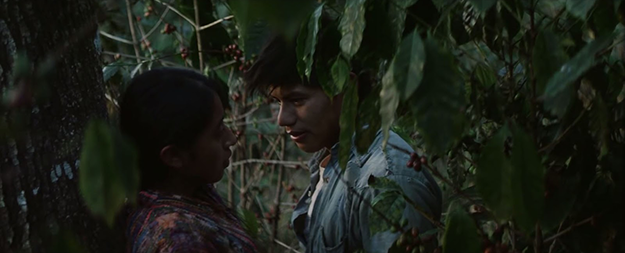
This relationship between María and Juana is complex, and it is their initially competing but ultimately united interests that become the driving force in this film, even more so than María’s individual story. Was this relationship originally something that you knew you would center on in the story?
There were two different threads in the film. One was the love of the baby, this stolen baby, and the other was the connection between Juana and María—that was so important. So, it was maternal love and the love of maternity. To me, to feel love, even if you’re not a woman or a mother, it’s very important that you have a wonderful maternal relationship. So I tried to underline maternity by saying that even if sometimes mothers don’t make the best decisions, they will still be strong and loving mothers to their daughters or sons. I tried to underline that in order to structure the film with this theme of love.
How did you choose your main actress, María Mercedes Coroy, and how did you go about working with her on developing the part of María, which she plays understatedly but with incredible presence? Was Coroy herself the inspiration for the character?
Actually, the María who inspired the character is another María. This María told me her story about the baby and I wrote a script inspired by those real events. After I wrote the script, I began looking for my actors. I met María Telon (who plays Juana) first, because María Telon is a professional actress. She works in a theater group that does street shows and they advocate for human rights, women’s rights, and indigenous rights. I followed her performances until we reached her town, and there I discovered a Mayan community, and this Mayan community is very curious about art, so I decided to hold my casting there, and that’s how I met María Mercedes. I chose her because she has these strong eyes and because she’s able to share a lot of feelings with almost nothing, with her presence.
Yes, her face didn’t move a lot in the film, but you always felt her emotions very intensely.
Yes, and she’s able to do a lot of things as an actress, but I wanted to be able to create a balance—because this film is partly about community, about the relationship between mother and daughter, so it was important, with María, to have an almost one-note character. You know, because Juana is this strong character, a force of nature, and María is a little bit timid, and you’re waiting for her to wake up, to become more like her mother. So I wanted to have one very strong, difficult character, and one that was more reserved, but with an inner force.
So they were sort of countering forces?
Yes, and I think these characters work well because they are together. It’s a mix of both that makes this magic.
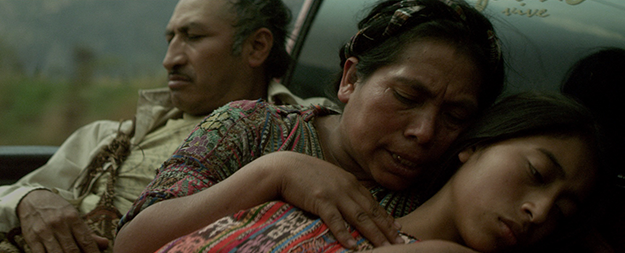
What was the process like of developing a film through a specific community? Did you feel a particular responsibility to those whose experiences you would be depicting in the film, and more generally, to the representation of Kaqchikel people in Guatemala?
I don’t have a colonialist feeling about it. In Guatemala there’s not really an industry, there are film actors—there is a big theater tradition but no screen actors—so I chose actors with talent, and I had the chance to work with them, but I don’t think they need me to make more work. We work together because we like working together, and we are just trying in the whole industry to continue to make more films. But I don’t feel a responsibility for the actors—I mean, they work with me, but I am not some sort of voice for the Mayan or Kaqchikel people.
But in the process of developing the script, did you feel like you needed to honor, in how you represented them, the experiences that were shared with you? Or did you feel like you could be more interpretive in the way that you developed the film?
Well, I was working in the Kaqchikel community, so I didn’t feel as if I was discovering something. It was just that I was trying to tell this story that this woman told me, but I know a lot of similar stories because we are still having a lot of problems with discrimination—there are not many opportunities for Mayans in Guatemala—so when I decided to tell this story it was because it came to me. I am really honored to have the opportunity to make this particular film, but these experiences are not unique.



